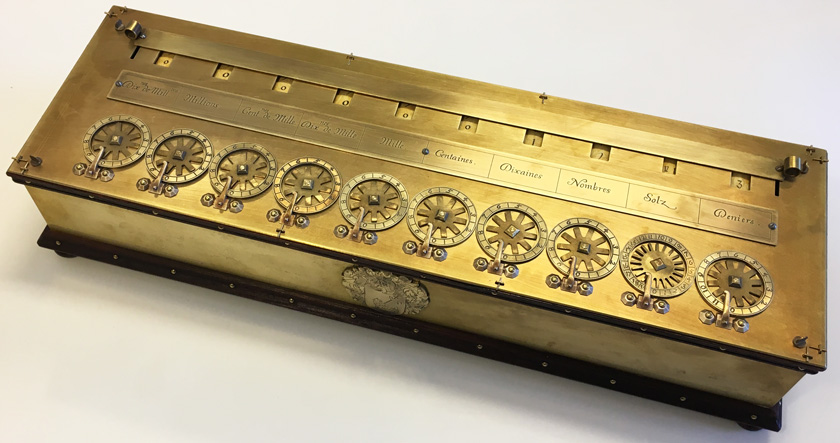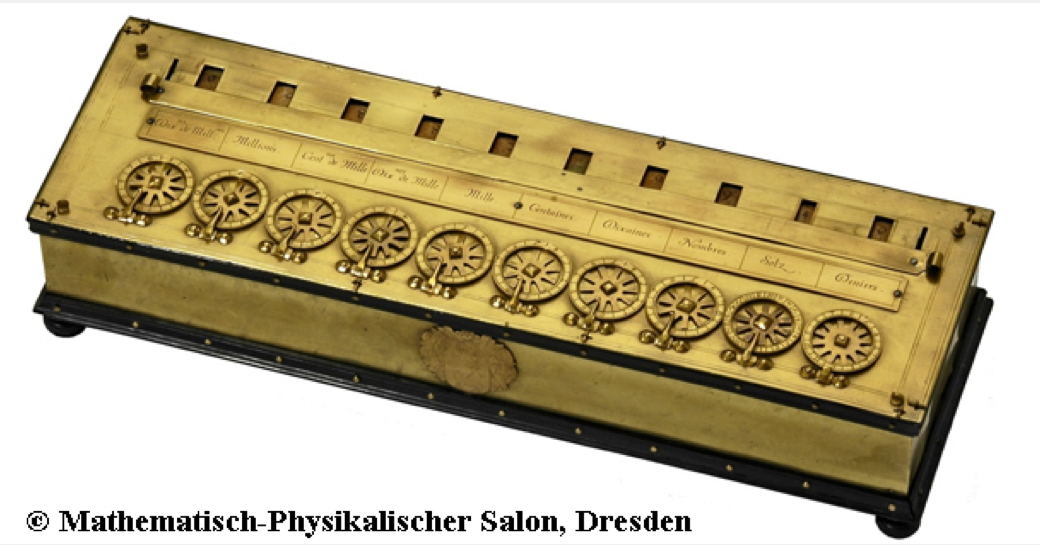Page under construction!
This extraordinary replica of the “Queen of Poland” Pascaline is the result of the return of master craftsman Jan Meyer to the task of fashioning a replica of the most elaborate Pascaline which has survived to this day. In fashioning this replica Jan Meyer drew upon his extensive experience in building his earlier working exemplar, also held in this collection. This enabled him to work even more finely, also constructing the internal mechanism to a much closer tolerance. The resulting “Queen of Poland” Pascaline has been fashioned with great dedication and craftsmanship entirely from brass and mahogany and faithfully follows the internal and external details of the original.
Once more the task of building this, together with several copies, took Jan Meyer hundreds of hours filling much of a year with an exacting labour.
Unlike his previous replica (which was not a replica of any particular surviving machine), this is a true replica of the most complicated Pascaline that survives. It is an accounting machine, designed to add and subtract large sums of money. And with 10 interacting input wheels (and corresponding output windows) it was capable of handling that task well. The replica Pascaline is shown below with the original shown immediately below that to aid comparison..

Replica of the “Queen of Poland” Pascaline (collection Calculant)

Original “Queen of Poland” Pascaline (Mathematisch-Physikalischer Salon, Dresden)
The original (immediately above) is one of two said to have been purchased1 by Maria-Luisa de Gonzaga (1611–67), wife of King Casimir, and thus Queen of Poland between 1649 and 1667 (she was also Queen by an earlier marriage between 1646 and 1648). In 1695 the throne passed to the Elector of Saxony providing some explanation of its modern resting place in Dresden. It is now on display at the Mathematisch-Physikalischer Salon in Dresden.
This time Jan Meyer, as opposed to his earlier working Pascaline exemplar, was able to actually get detail of the actual machine at Dresden. As he wrote at the time “The Pascaline has now, after the experience with the construction of the first, a completely different impression to me. I know every part, since I have had it in my hands hundreds of times. So I can at first attempt recognize the differences to my replica. In summary, one can say that everything is more fine and delicate than on my replica. For example, the engravings. I have made many close-ups, so I can do a much better job this time.”
As Jan Meyer studied the existing surviving machine he noticed that “The Pascaline in Dresden has been inexpertly repaired at the position for Solz. They have replaced a star with 10 spokes instead of 20! The museum has confirmed this mistake. I’ll use a star with 20 spokes…”. So at least in this sense, this replica may be more accurate than the surviving machine!
The construction of this replica of the Dresden Pascaline was executed entirely by Jan Meyer, supported by two collectors (of which one is the editor of this site) each of whom retains one copy. One copy remains with Jan Meyer, and a further one was sold Jan Meyer by Auction Team Breker in November 2017 (Lot 71 - at a realised price - including buyer’s premium and taxes - of 12,296 Euro).
Other information provided in this site includes Pascaline ~1650 - working exemplar based on surviving machines, Operating Instructions for a Pascaline, 1759 diagram, Pascal’s original “avis nécessaire” pamphlet and other historical diagrams of the mechanism and details of surviving Pascalines and other replica Pascalines.
1 D. Adamson, Blaise Pascal- Mathematician, Physicist and Thinker about God, Palgrave Macmillan, UK, 1995, pp. 156, 236. (↑)
Pages linked to this page
 This work by Jim Falk is licensed under a Creative Commons Attribution-NonCommercial-NoDerivs 3.0 Unported License Click on the logo to the left to see the terms on which you can use it.
This work by Jim Falk is licensed under a Creative Commons Attribution-NonCommercial-NoDerivs 3.0 Unported License Click on the logo to the left to see the terms on which you can use it.